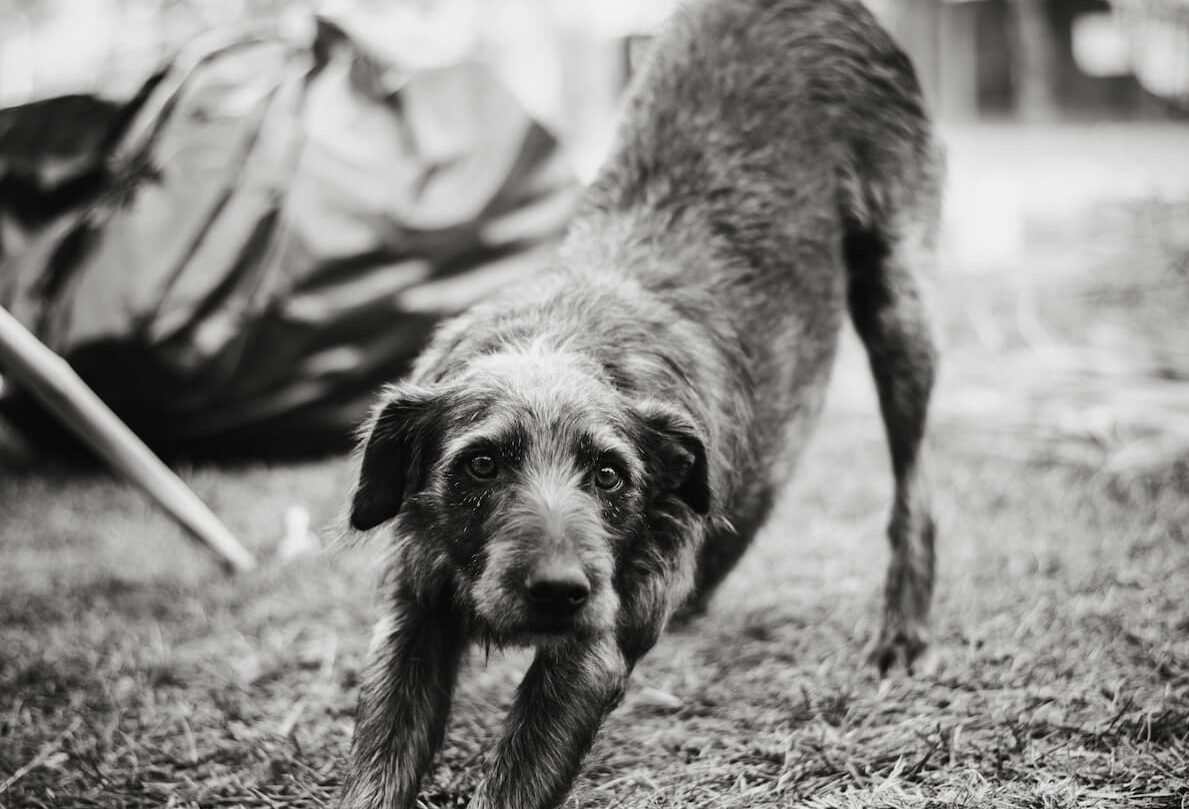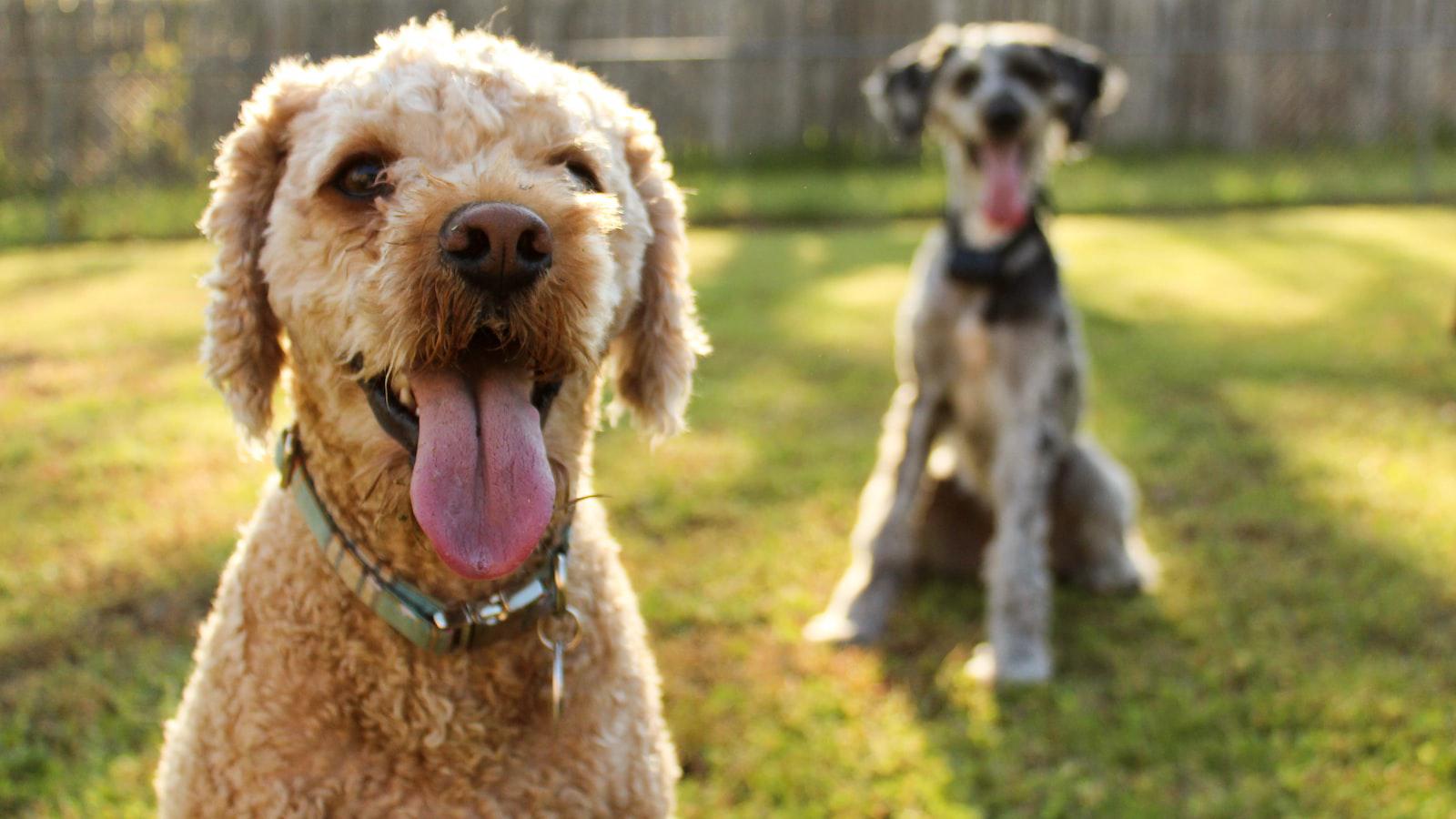Picture this: a serene Sunday morning stroll in the park, the sun shining down on the vibrant autumn leaves.
You’re basking in the tranquility, enjoying the company of your furry friend, when suddenly, a loud bark pierces the air.
Your heart skips a beat as you glance over to find your innocent companion directing their attention towards a passerby, who happens to be black.
You’re left puzzled, even a little embarrassed, wondering why your dog just reacted in such a peculiar way.
If you’ve ever experienced this situation, rest assured, you’re not alone.
Dogs barking at black people is a phenomenon that has bewildered many pet owners and sparked numerous discussions.
Fortunately, this article will provide all the answers you need.
But before we dive in, remember, our goal here is not to generalize or label dogs as discriminatory animals.
On the contrary, we aim to shed light on this topic to promote understanding, empathy, and, perhaps, find practical solutions for a harmonious coexistence between dogs and people of all ethnicities.
Why do Dogs Bark at Black People?
When it comes to our furry friends, dogs, it’s natural to wonder why they exhibit certain behaviors, such as barking.
One such behavior that some people have observed is that dogs tend to bark at black people more often.
However, it’s important to approach this topic with sensitivity and objectivity as it can be a complex issue.
Firstly, it’s crucial to acknowledge that dogs do not bark at individuals solely based on their race or skin color.
Instead, dogs primarily rely on their senses to evaluate their environment and respond to various stimuli.
One theory suggests that dogs may bark more at black people because of their unfamiliarity with certain physical characteristics, such as darker skin tones or different hair textures.
Dogs are inherently perceptive and may react more strongly towards anything that seems unfamiliar.
It’s important to note that a dog’s perception of race is not the same as human perception.
Dogs rely heavily on visual cues, such as body language and facial expressions, to interpret their environment.
They may not recognize that skin color is the basis for their reaction; instead, they respond to unfamiliarity or perceived threat.
Secondly, it’s essential to consider the role of socialization in a dog’s behavior.
Dogs that have been exposed to a diverse range of people during their formative years are less likely to exhibit this behavior.
Proper socialization helps dogs develop a balanced temperament and reduces the likelihood of fear or anxiety-related responses.
Additionally, a dog’s previous experiences, whether positive or negative, can contribute to their reactions.
If a dog has had a negative encounter with a person of a certain race, they may generalize and react negatively towards others who share similar physical characteristics.
Exploring Fear and Aggression’s Impact on a Dog’s Response to Black People
We all know that dogs can sometimes exhibit behavior that may seem strange or unpredictable.
It’s important to understand that dogs, just like humans, can be influenced by a range of factors, including their past experiences, socialization, and even their genetic predisposition.
An interesting aspect that research has uncovered is the link between a dog’s response towards black people and the emotions of fear and aggression.
Fear and Its Impact on Dogs
Dogs can experience fear towards unfamiliar people, regardless of their race.
This fear may lead to cautious behavior, barking, or even defensive aggression.
Fear responses are often rooted in a dog’s lack of exposure or negative experiences with a particular race, in this case, black people.
It is crucial to understand that this fear is not specific to black individuals, but rather a result of unfamiliarity or a lack of positive association.
It’s important to note that fear can be counteracted through proper socialization and positive reinforcement.
By exposing dogs to diverse individuals, introducing training exercises, and rewarding calm behavior, we can help them overcome their fears and become comfortable around people of all races.
Patience, consistency, and professional guidance are essential in this process.
Aggression and Its Relation to Fear
Aggression is another aspect of a dog’s response that should be considered.
Dogs may display aggression towards unfamiliar individuals due to their fear-based instinct to protect themselves or their owners.
When a dog senses an unfamiliar presence, it often perceives it as a potential threat, leading to aggressive behaviors such as growling, barking, or even lunging.
It’s important to understand that this aggression is rooted in fear and not in any inherent prejudice or racism.
To address aggression towards black people or any other race, it is crucial to seek the assistance of a professional dog trainer or behaviorist.
They can help identify the underlying fear triggers and develop a tailored behavior modification plan to help the dog overcome its aggressive responses and learn more appropriate ways to deal with unfamiliar individuals.
Addressing the Impact of Unconscious Biases on Dog’s Behavior
Unconscious biases may play a role in influencing a dog’s behavior.
Just like humans, dogs can pick up on subtle cues from their environment and the people around them.
If a dog’s primary caregiver has unconscious biases or shows signs of discomfort around certain individuals, the dog may internalize these feelings as well.
It’s crucial for dog owners to be aware of their own biases and work towards addressing them in order to create a more inclusive and harmonious environment for their pets.
Tips for Reducing Your Dog’s Barking at Black People
Positive socialization: Gradually introduce your dog to different people from diverse racial backgrounds in a controlled environment, offering plenty of praise and treats for calm behavior.
This exposure will help your dog become more comfortable and less reactive towards unfamiliar individuals.
Training and obedience: Invest time in training your dog to respond to basic commands such as “sit,” “stay,” and “leave it.”
This will not only establish your role as the pack leader but also give you control in distracting your dog and redirecting its attention when it starts barking.
Seek professional help if needed: If your efforts alone don’t yield the desired results, consider consulting a professional dog trainer or animal behaviorist who specializes in behavioral issues.
They can provide personalized guidance and techniques tailored to address your dog’s specific barking triggers.
Remember, patience and consistency are key when working with your dog to reduce barking.
It’s important to approach this issue with compassion, understanding, and a commitment to helping your furry friend feel safe and secure in any situation.
With time and effort, your dog can learn to overcome its fears and bark less at people of all races, creating a more harmonious and inclusive environment for everyone.
FAQ
Q: What causes dogs to bark more at certain individuals?
A: Dogs rely heavily on their instincts and senses to evaluate the world around them, and that includes people they encounter.
One of the primary reasons dogs may bark at certain individuals is simply that they appear different or unfamiliar to them.
Dogs use their keen sense of sight to detect differences in size, shape, clothing, or even unusual accessories.
This unfamiliarity can make them feel uncertain and, therefore, trigger their protective or territorial instincts, resulting in barking.
Q: So, it’s not about race but rather the unfamiliarity?
A: Absolutely!
Dogs don’t possess the concept of race as we humans do.
It’s all about recognizing patterns and categorizing individuals as familiar or unfamiliar to them.
Since dogs perceive the world primarily through their sense of sight, it’s natural for them to react to any person who looks different from what they are used to.
Therefore, it’s essential to focus on helping dogs become more comfortable and familiar with a diverse range of people, regardless of skin color.
Q: Can a dog’s behavior be influenced by the owner’s attitude towards certain races?
A: Undoubtedly, a dog’s behavior can be influenced by their owner’s attitudes, emotions, and behavior.
Dogs are highly intuitive animals, and they can pick up on their owners’ feelings, biases, or anxieties.
If an owner exhibits fear, discomfort, or treats certain races differently, it may inadvertently transfer those emotions to their pet.
Dogs, being the loyal creatures they are, might mirror their owners’ behavior and react accordingly.
That’s why it’s crucial for owners to promote inclusivity, acceptance, and treat everyone they encounter with respect.
Q: What steps can I take to ensure my dog reacts positively to all individuals?
A: Great question!
Ensuring your furry friend reacts positively to all individuals requires proper socialization and exposure to various people from an early age.
Make sure your dog encounters people of different races, ethnicities, and appearances during their critical socialization period, which is typically between 3 and 14 weeks of age.
This exposure will help them build positive associations and become comfortable around diversity.
Additionally, using positive reinforcement training methods can help shape their behavior and reinforce their positive reactions towards all individuals.
Q: Are there any specialized training programs available to address this issue?
A: Yes, there are indeed specialized training programs that focus on increasing a dog’s comfort level with a diverse range of people.
Working with a professional dog trainer or behaviorist who specializes in positive reinforcement training can be highly beneficial.
They can help identify the root cause of your dog’s reactions and develop a personalized training plan to overcome any fears or uncertainties they may have.
Remember, with patience, consistency, and proper training, dogs can learn to be more accepting and friendly towards everyone, regardless of their appearance.
Remember, our furry pals don’t possess any prejudice or discriminatory thoughts like humans do.
It’s up to us as responsible owners to ensure they grow up in a loving and inclusive environment that fosters acceptance and respect towards people of all races!
The Last Word
It’s crucial to remember that dogs are not inherently racist.
Their barks are not motivated by hate or prejudice. Instead, they react to visual cues that we, as humans, might overlook or fail to understand fully.
By recognizing and appreciating this, we can work towards a solution that benefits all involved.
So, what can we do to promote harmony and understanding between our furry friends and people of different races?
Well, education is key!
Providing training that exposes dogs to a wide range of social interactions, including various races, can help broaden their understanding.
Additionally, incorporating positive reinforcement techniques can also foster a more tolerant and accepting mindset in our canine companions.
Moreover, we as individuals play a significant role in this equation.
Treating our dogs with love, respect, and care is essential.
And it’s equally important to spread awareness among our communities, helping others understand the root causes of this behavior rather than jumping to conclusions or perpetuating misunderstandings.
Remember, every dog is unique, and there is no one-size-fits-all explanation.
By embracing open-mindedness, empathy, and patience, we can create a world where dogs and people from all walks of life can coexist harmoniously.














